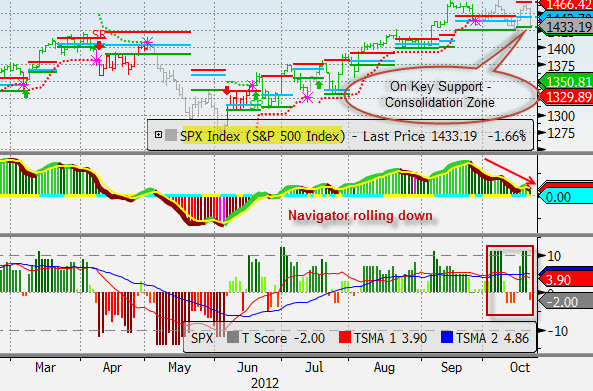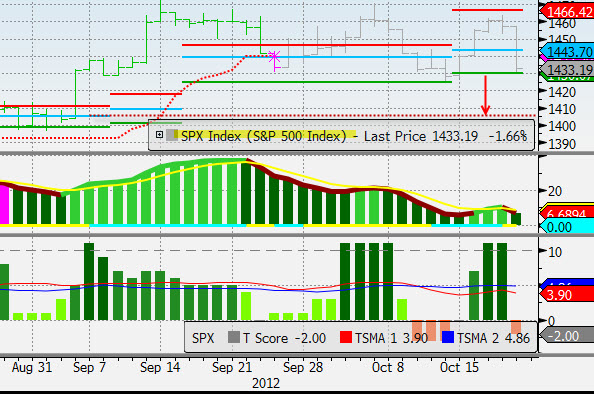We are starting to see some of the excess exuberance run out of markets and there are some important levels to watch for confirmation of a new trend. As we have seen over the past few months, there has been a series of jolts higher, just when markets looked like they were the most vulnerable. Once again the S&P 500 Index is approaching key support levels that need to hold or there could be a swift move lower as support may not hold below. (We talk about this exact topic as well as gold, corn and S&P futures on this week’s TDI Podcast)
As we look at the view since March, there is a few things to focus on. First, notice that the TAS Navigator is rolling down and that has been the directional trend since mid September. As the index was trying to make its way higher, the Navigator was providing a contra-rally signal. In other words – it was not a robust rally like as had been seen when there is a rising trend for that indicator.![]()
In addition, there has been a good deal of support close to the 1,400 level as can bee seen by the horizontal lines that signify the existence (or not) of value areas. Essentially, outside of these are fast zones, sometimes referred to as air-pockets that have little resistance or support. For now, there is still a reasonably solid level of support close to the 1,400 level.
Also, the T|score (proprietary indicator we designed), is bouncing all over the place. Now it is under the zero line and that will need to resolve directionally before the trend can be confirmed or re-confirmed.
Looking more closely shows the bounce directly off of our key level of support (green line).
Calculating the cumulative potential for the short-term move, we see that the next level of decent support (if a break of 1,400) is right on 1,375. Beyond that, we could see 1,325 if the downtrend gains momentum from there. On the upside, there is clearly a cap at the 1,466 level that will have to be monitored. However, barring any news that is not already priced in, the next leg has a higher probability of moving lower from here.


















